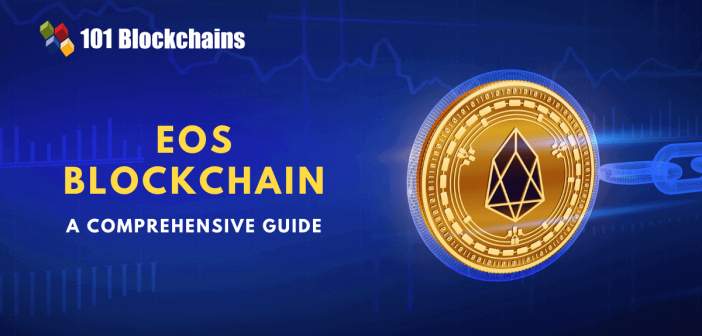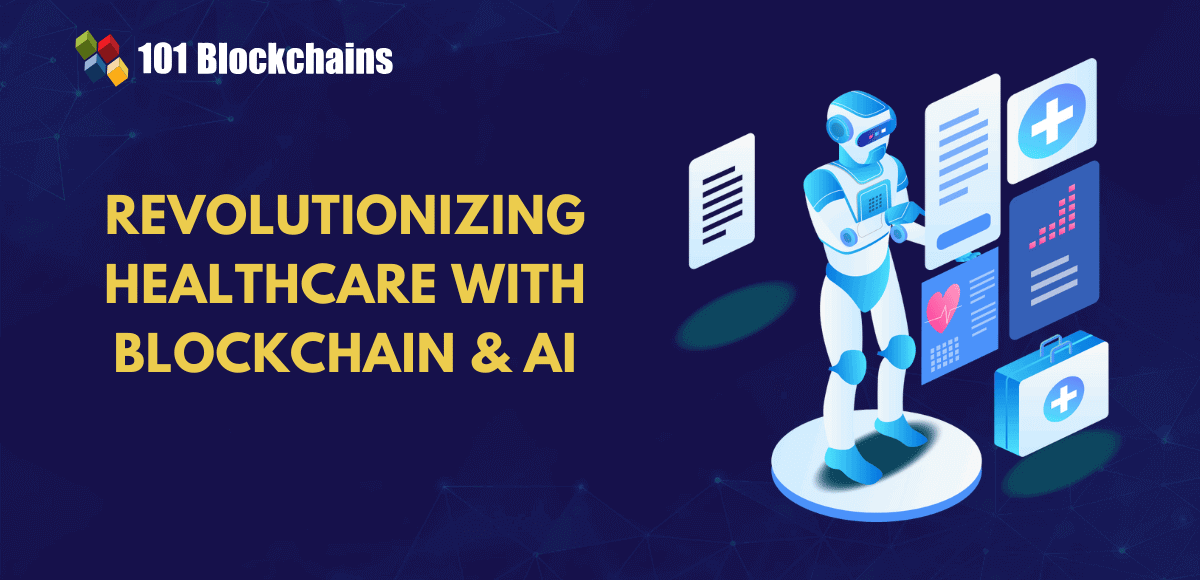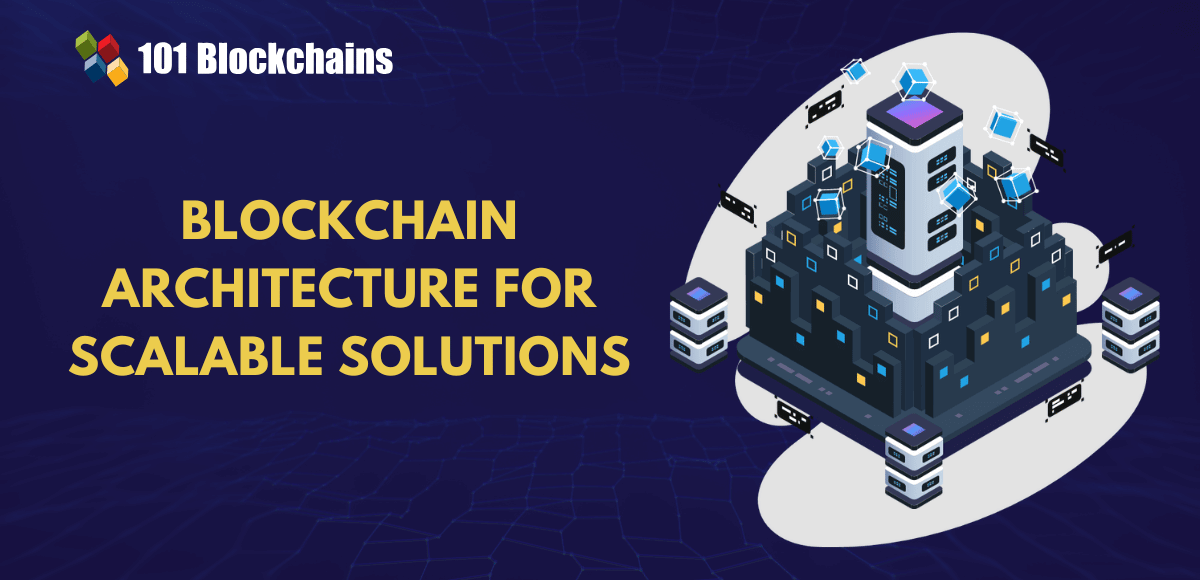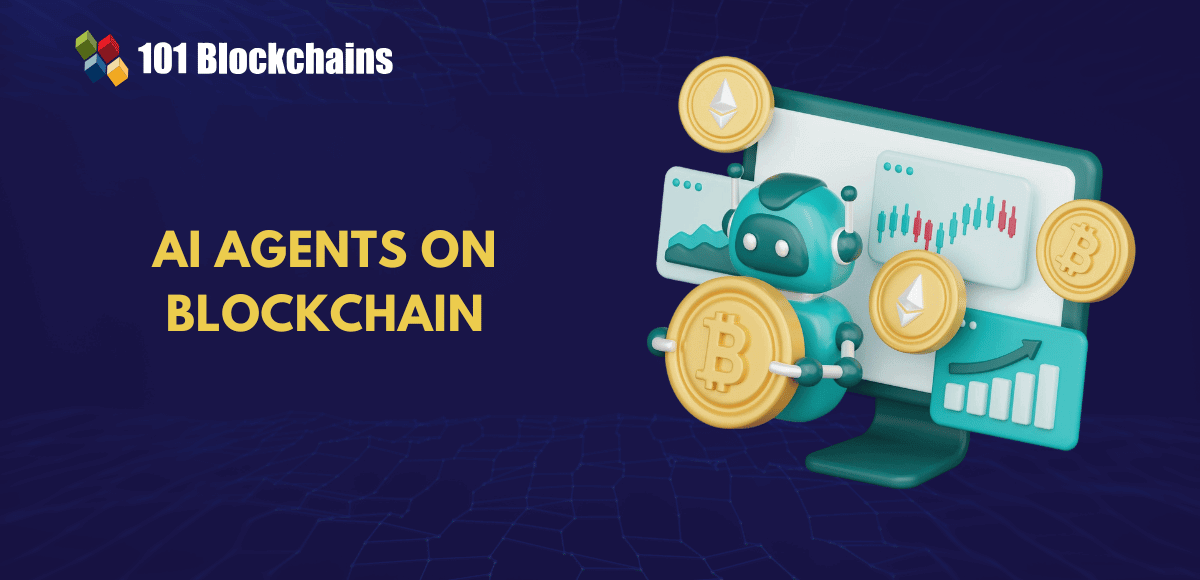Learn how blockchain truly works, master key definitions, and uncover what makes smart contracts so "smart." Dive into the fundamentals, gain valuable insights, and start your blockchain journey today!

- Blockchain
101 Blockchains
- on June 06, 2018
EOS Blockchain – A Comprehensive Guide
EOS is a blockchain based, decentralized platform that aims to develop and support industrial-scale applications. The system has been developed by Dan Larrimer and it is very similar to Ethereum. After establishing itself in the top crytocur the top 10 cryptocurrencies by market cap, it is available for trading and investing on eToro platform.
EOS basic function is to provide easy-to-use tools for developing dApps and to enable instantaneous transactions and offer scalability. EOS has revolutionized the market due to two major reasons such as:
- It aims to remove the transaction fee completely.
- They are building a capacity to conduct millions of transactions per second.
EOS has been working on bringing all the features of various technologies into one platform which will be easy to use for the user and empower the blockchain economy.
Build your identity as a certified blockchain expert with 101 Blockchains’ Blockchain Certifications designed to provide enhanced career prospects.
Features of EOS Blockchain
- Parallel Processing – Parallel, faster transaction speeds and more scalability while using the platform.
- Decentralized Operating System – Developers can build their applications on EOS blockchain by using EOS coins. The coins are not utilized, only the proof of their holding is necessary to be able to use EOS resources. It also helps app developers to communicate with each other.
- A Constitution – Every block mined has a set of rules which are to be followed by everyone making the platform completely decentralized.
- Self sufficiency and Evolution – The current model provides 5% inflation to develop the network further.
- Low latency – Least possible latency with a smooth running of DApps.
Get familiar with the terms related to blockchain with Blockchain Basics Flashcards.
How EOS Blockchain Works
EOS is very similar to Ethereum in its capability of hosting dApps and improving the number of transactions the network can process at a given time. It improves its position in the blockchain analysis as it increases the scalability. EOS blockchain uses a new consensus model called Delegated-Proof-of-Stake (DPoS) to improve its viability.
It works on an ownership model where users can own and use resources proportional to their stake rather than paying for each transaction which helps in eliminating transaction fees. It helps the user maintain a certain percentage of stake and create freemium applications. EOS also allows for its users to rent or delegate their share of resources to other developers.
Advantages of EOS
- EOS comes with a full-feature authentication system user accounts, various permission levels and locally secured user data. Recovery for stolen accounts and restoring access has been installed into the system.
- EOS have an added feature of server hosting and cloud storage helping developers build and deploy applications and download bandwidth provided by the EOS system. Access to analytics directly from EOS and setting limits for specific applications can be used by staking EOS tokens.
- EOS can scale to one million transactions per second using consensus over events which focus on transactions. Nodes verify the series of events that have occurred so far through this.
- EOS application does not require micropayments by users to send messages and perform tasks on blockchain. App developers can individually decide their monetization strategy and transaction fees.
- The community can actively upgrade and fix bugs in applications in a secure manner due to the governance model. This model is based on block producers that can check which transactions are confirmed.
- EOS maximizes the performance by structuring each block which helps in sending and responding to messages and transactions within single blocks and between blocks.
- EOS token sale takes place over a full year where the tokens for that period are distributed to contributors based on the amount of Ether they contributed.
Start your blockchain journey Now with the Enterprise Blockchains Fundamentals
History of EOS
The EOS white paper went public in 2017. After that, a series of events occurred. One of the major ones includes the showcase of the EOSIO single-threaded application Testnet is done on November 29, 2017. It is also known as “EOS STAT.” It is a testing environment which was made available to the public.
Let’s go through its main events one by one below.
- May 17th, 2017: A hypothetical currency application implemented on EOS.
- May 30th, 2017: Block.one goes open source
- June 10th 2017: EOS token sale smart contract draft created.
- June 22nd, 2017: Token Sale for EOS token launches. They also announced for a year-long ICO.
- June 25th, 2017: EOS started trading at Bitfinex.
- EOS raised $185 million in just five days after the launch of their ICO.
- Sep. 14th, 2017: The Dawn of EOS.IO is launched https://github.com/eosio
- Oct. 29th, 2017: Block.one announces that they will invest $1 billion towards projects built on EOS
- Dec. 4th, 2017: Dawn 2.0 released
- Mar 7th, 2018: EOSIO stack exchange proposal is introduced.
- Mar 21st, 2018: $100 million joint venture between Block.one and Finlab AG
- Apr 6th, 2018: EOSIO Dawn 3.0 is launched
- EOS raises $4 billion.
- June 2nd, 2018: EOSIO 1.0 is finally launched to the public
- June 14th EOS is officially alive after achieving 15% voting.
Aspiring to make a lucrative career as a blockchain engineer but not sure how? Check the detailed guide Now on How To Become A Blockchain Engineer
Who is the person behind EOS?
Daniel Larimer is the person behind EOS. He is a cryptocurrency pioneer with experience in building projects based on the blockchain. Until now, he has developed three successful projects. They are Bitshares, Steem, and EOS itself. His journey started in 2014 when he began building his first decentralized platform known as BitShares. BitShares is a self-sustaining, self-funded, and self-regulated platform that provides a decentralized approach to the funding system.
The next big project that he worked on is Steem. The project started in early 2016. It is a blockchain platform that provides users with a way to monetize their online content. It is highly successful in the current market, and millions of users currently use it to monetize their content.
His third project was EOS. EOS after its initial launch gained a lot of attention. It was created by block.one who developed the solution behind it. They also received good funding at the start, and continue their development. The success of EOS platform is because of the experience of Block.one team. They are experienced when it comes to building blockchain applications. They also have one of the best advisor, investors, and developers.
Block.one – the player behind EOS
Everything that you see right now is made possible by Block.one. They are the company that built EOS from the ground up. They also released the EOS token to the public in June 2017. Also, the CTO of the company is Daniel Larimer, the mind behind this project. As we already discussed he also developed Bitshares and Steemit. Important to clarify that the platform is running by the 21 Block producers and not by Block.one.
Many EOS applications are currently using EOS network. One such project that made news is Everipedia. It is a wiki-like platform that makes use of the EOS blockchain platform. It is decentralized but for-profit. They started planning for the integration in December 2017. By using blockchain, they will be able to prevent companies from blocking information from the public.
How To Buy EOS Cryptocurrency
EOS could be bought and sold through exchange using Bitfinix and Kraken. EOS token does not have any value and yet its market capitalization has crossed many other cryptocurrencies. It could be stored in wallets like Metamask and MyEtherWallet.
Update: Important to note that now that the mainnet has launched the erc20 ethreum tokens were swapped for eos mainnet tokens and can no longer be used with erc20 wallets such as mew or metamask.
Want to become a Cryptocurrency expert? Enroll Now in Cryptocurrency Fundamentals Course!
What the future holds for EOS
OS is not reliant on miners but directly linked to the number of people using it. It improves its practical use as a currency and holds bright future. Many market players look at a probable future price of $150 by year 2020 and has a fewer risks compared to other cryptocurrencies. EOS has seen a daily peak of 20% and growth rate of 336.42%. It is expected to emerge as a formidable Initial Coin Offerings as the scalability makes it more attractive.
Final Words
At the time of writing, EOS is transiting to Main Net. The price of each EOS token is $11.04. It grew tremendously in the past few months. The growth was because of the anticipation of the Main Net launch. It’s price reached $20 per token before stabilizing around 11-12$.
EOS is one of the most revolutionary projects in the dApp scenario with game changing features. The team behind the development of EOS, BlockOne has a great vision and good experience and believe in technology. Growth may just be the reason of the success of the cryptocurrency and remove the pitfalls of Ethereum and replace it in future with free and scalable transactions.
*Disclaimer: The article should not be taken as, and is not intended to provide any investment advice. Claims made in this article do not constitute investment advice and should not be taken as such. 101 Blockchains shall not be responsible for any loss sustained by any person who relies on this article. Do your own research!







5 Comments
Important to note that now that the mainnet has launched the erc20 ethreum tokens were swapped for eos mainnet tokens and can no longer be used with erc20 wallets such as mew or metamask.
You wrote at one section, that block.one runs eos. This is actually not true. The 21 Block producer run the platfrom
Hi Chess, Thanks!!
Already updated, what do you think? Should we add the list of BPs?
Hi Jinji,
Thanks!
It is True, and updated.
Should we have a guide on how to buy and sell EOS? your thoughts please
Thats probably a different blog post 😉